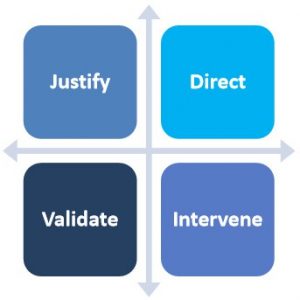Exin ITIL Continual Service Improvement
[bs_icon name=”glyphicon glyphicon-chevron-right”] The Role of Measurement
Measurement plays a critical role within ITIL®, both as a part of Continual Service Improvement, but also within Service Level Management and as an essential part of all processes. Measurements can be used for four basic purposes as shown below:
- To JUSTIFY a proposed course of action
- To DIRECT activity
- To INTERVENE when corrective action is required
- To VALIDATE actions which have already been taken

[bs_icon name=”glyphicon glyphicon-chevron-right”] Objectives, CSFs, KPIs, Metrics, and Measurements
Measurements are the end result of a hierarchy of activities which link measurements to business objectives as shown in the illustration below.
- Objectives establish the reason for measurement. Measurement in itself has no value. Rather, it only has value inasmuch as it supports achievement of specific objectives.
- Critical Success Factors define specific things that must happen if objectives are to be achieved.
- Key Performance Indicators are metrics which specifically indicate progress or performance around or toward Critical Success Factors.
- Metrics are the definitions of what will be measured and how it will be measured.
- Measurements are the actual readings taken based upon a specific metric.
[bs_icon name=”glyphicon glyphicon-chevron-right”] The Deming Cycle
The Deming Cycle is an improvement model originally created by W. Edwards Deming and used to great success in the Japanese auto industry. It consists of four simple steps (Plan, Do, Check, Act) as show in the figure below.
[bs_icon name=”glyphicon glyphicon-chevron-right”] The Continual Service Improvement Model
The Continual Service Improvement Model is a simple set of guiding questions which can be used to organize and perpetuate an improvement program. It closely mirrors the basic approach also used in the ITIL® 7-Step Improvement Process.
**Source by wikipedia**
To Become Certified For Exin ITIL Please Visit This Link ;